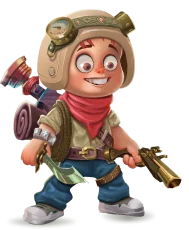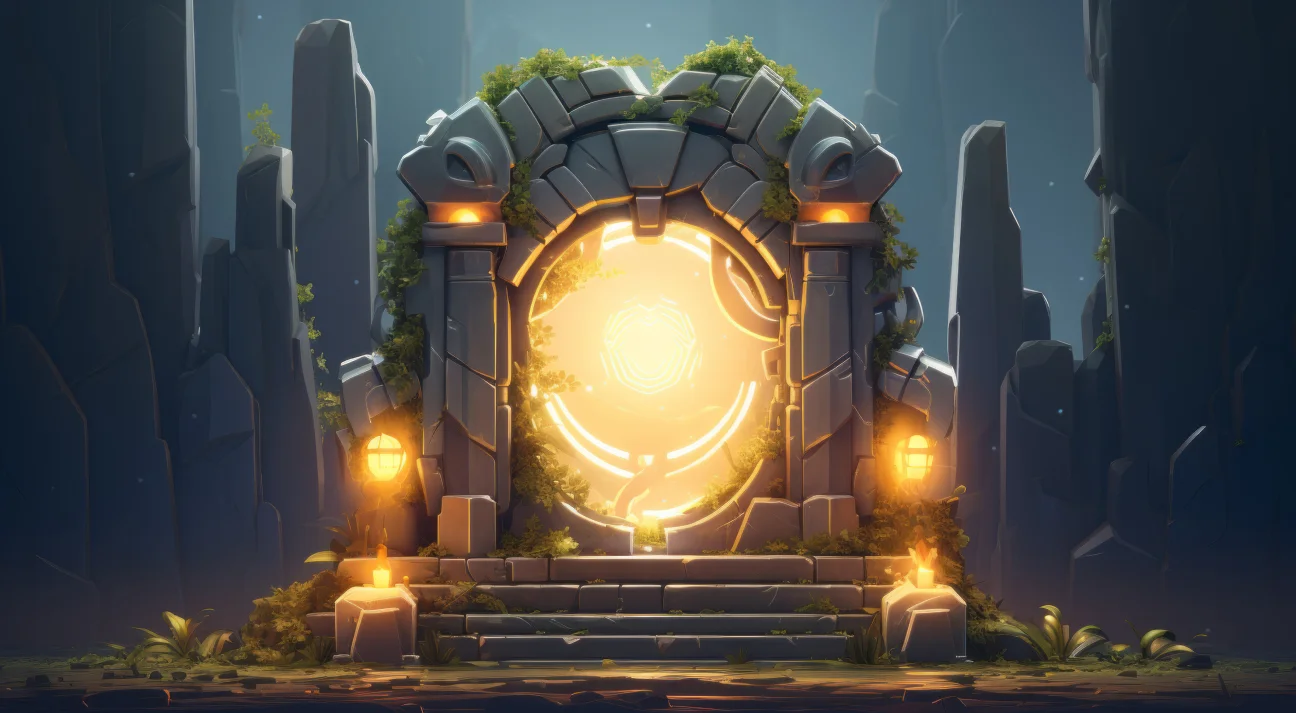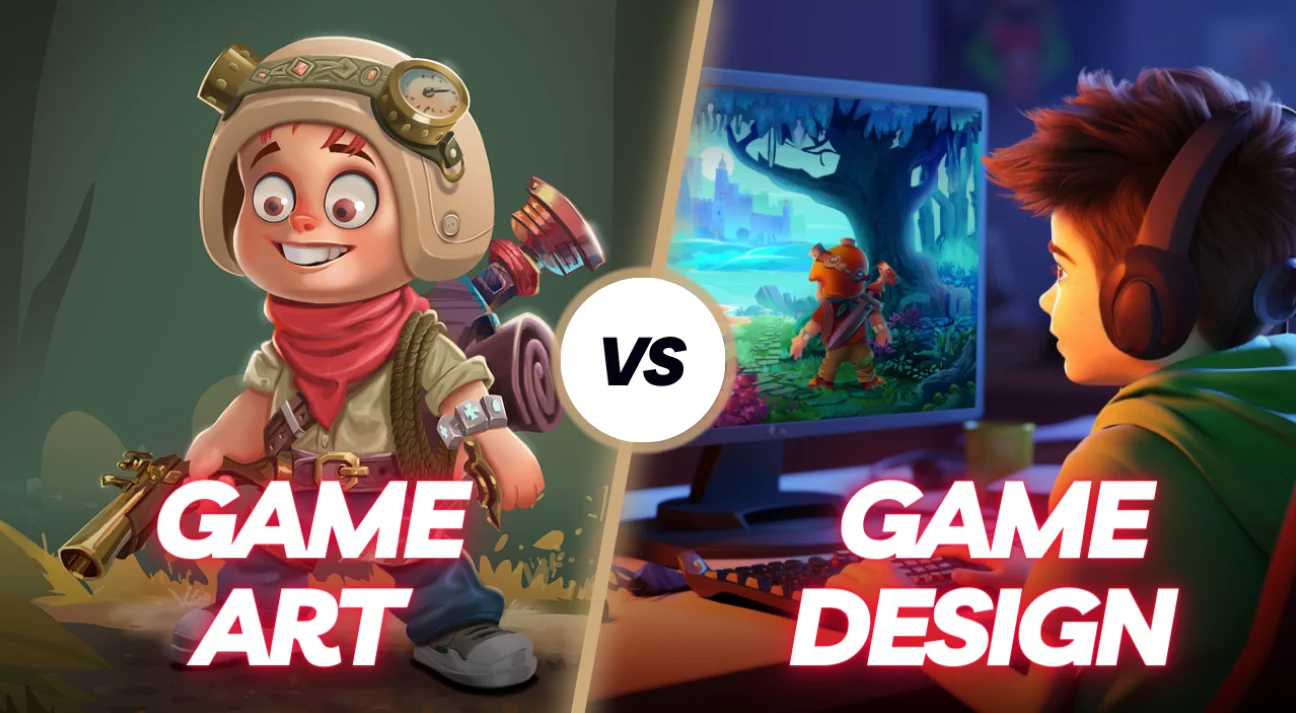
Game Art vs Game Design: How Are They Different From Each Other?
Game art encompasses the visual elements of a game, including characters, environments, and animations, while game design focuses on crafting gameplay mechanics, rules, and overall player experiences. In this blog on game art vs. game design, we’ve explored the fundamental distinctions between both, shedding light on their unique roles and contributions to the game development process.
Picture yourself in a game world full of canvases, filled with colors and wonders, where every action you take shapes the very fabric of reality. Think of brush strokes that breathe life into virtual worlds, crafting vibrant characters, breathtaking landscapes, and captivating visuals.
The same brush helps you build the architect that sculpts game rules, mechanics, and interactions that guide players through the game. That’s the game world for you! Amidst these vast landscapes of virtual adventures, there are two distinct forces at play: Game Art and Game Design.
But why are these two important for game development? What role do they play in creating the games we love to play? What are their differentiators? This blog on game art vs. game design will answer your questions and tell you more about both art types.
What is Game Art?
Game Art design refers to the visual elements within a video game, including characters, environments, objects, and animations. You can understand it from an example: you are getting into the lush forests, towering castles, and mystical creatures you encounter are game arts.
Each tree, rock, and creature has been meticulously designed by artists to evoke a sense of wonder and immersion for the player.
Also read: How to Create Desirable 2D Game Art – The Ultimate Guide
What is Game Design?
Game design is the art of creating a game’s rules, mechanics, goals, and overall structure, delivering an immersive and entertaining experience for players. Game designers use their creativity, technical prowess, and player psychology to design mechanics that dictate player interactions, establish objectives to drive gameplay, and weave narratives into the story.
You can understand it with the example of the Dots and Boxes mobile game. It represents a traditional pen-and-paper game while incorporating digital features to enhance the experience. Players engage in turn-based gameplay, drawing lines between dots to form boxes and earn points.
The user interface presents a grid layout with intuitive controls for submitting moves and clear indicators for turn order and scoring.
Multiplayer functionality allows players to compete in real-time or asynchronously. Its feedback mechanisms highlight completed boxes and update scores dynamically, while customization options provide flexibility with grid sizes and rule variations.
What are the Types of Game Art?
Game art encompasses a wide range of visual elements that contribute to the overall aesthetic and atmosphere of a game. Some common types of game art design include:
Concept Art
Concept art creation refers to the initial visual representations and ideas created by artists and designers during the early stages of game development. These artworks serve as visual blueprints for characters, environments, props, and other elements. Concept art captures the aesthetic direction, mood, and atmosphere envisioned for the game, establishing its visual identity.
Artists usually explore various styles, color palettes, and designs to convey the intended look and feel of the game, allowing developers to make informed decisions about art direction, level design, and character creation.
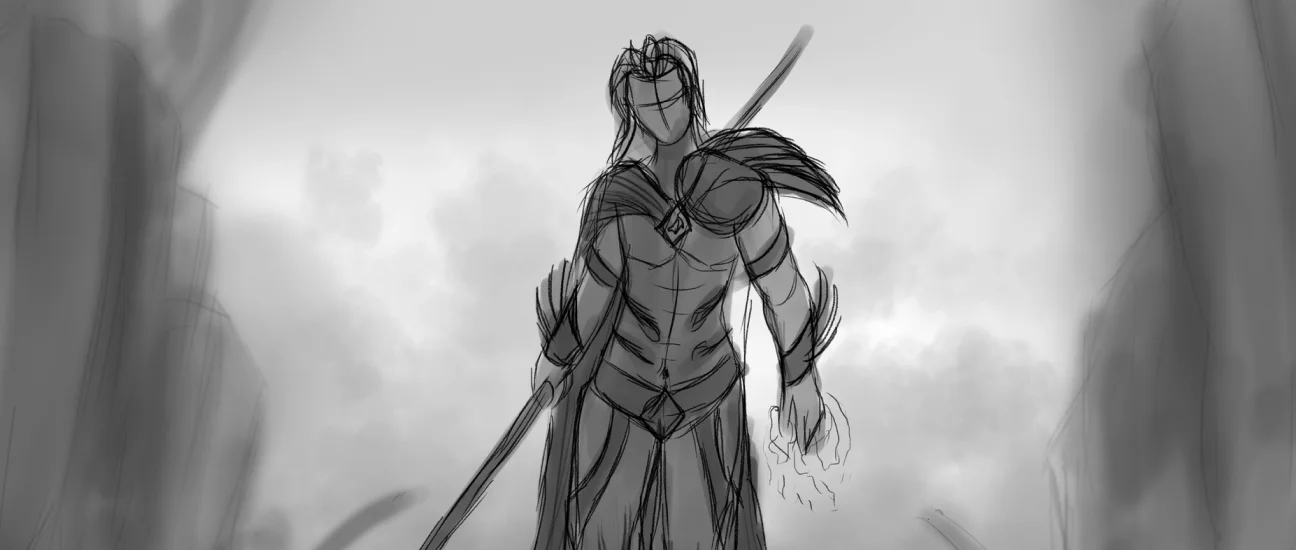
Character Art
Game character art involves the development of visual representations of characters within a video game. These characters can range from protagonists and antagonists to non-playable characters (NPCs) and creatures. They put the design through various stages, including concept art, modeling, texturing, rigging, and animation while ensuring alignment with the game narrative, gameplay mechanics, and visual style.
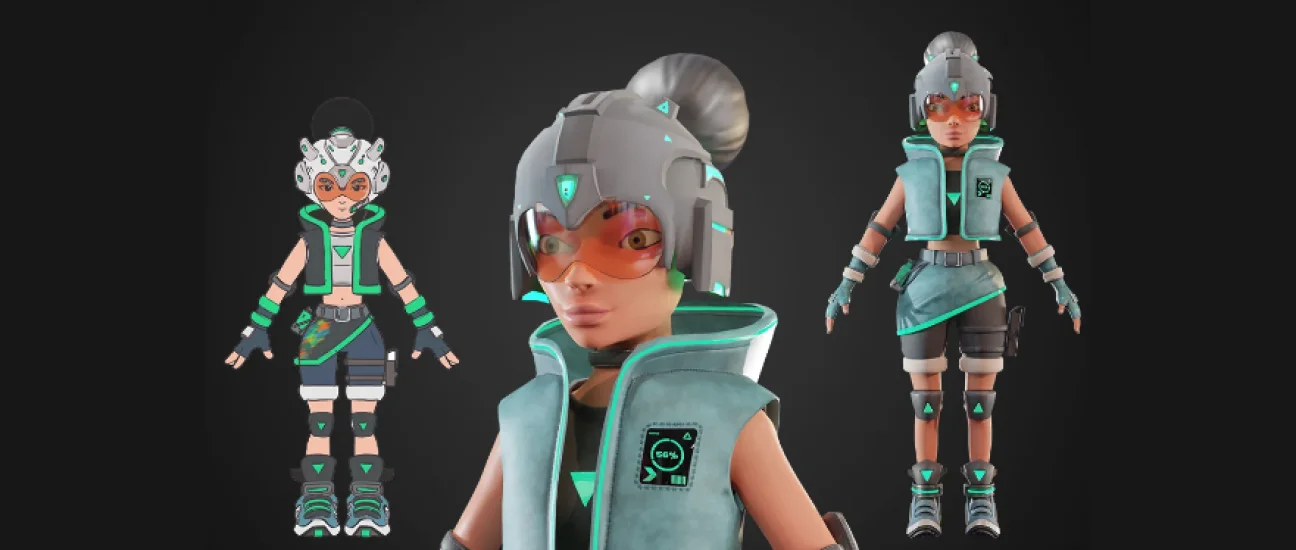
Prop Art
Prop art helps create visual assets that populate the game world and contribute to its atmosphere and immersion. These props involve furniture, weapons, vehicles, vegetation, and environmental elements like rocks, crates, and barrels.
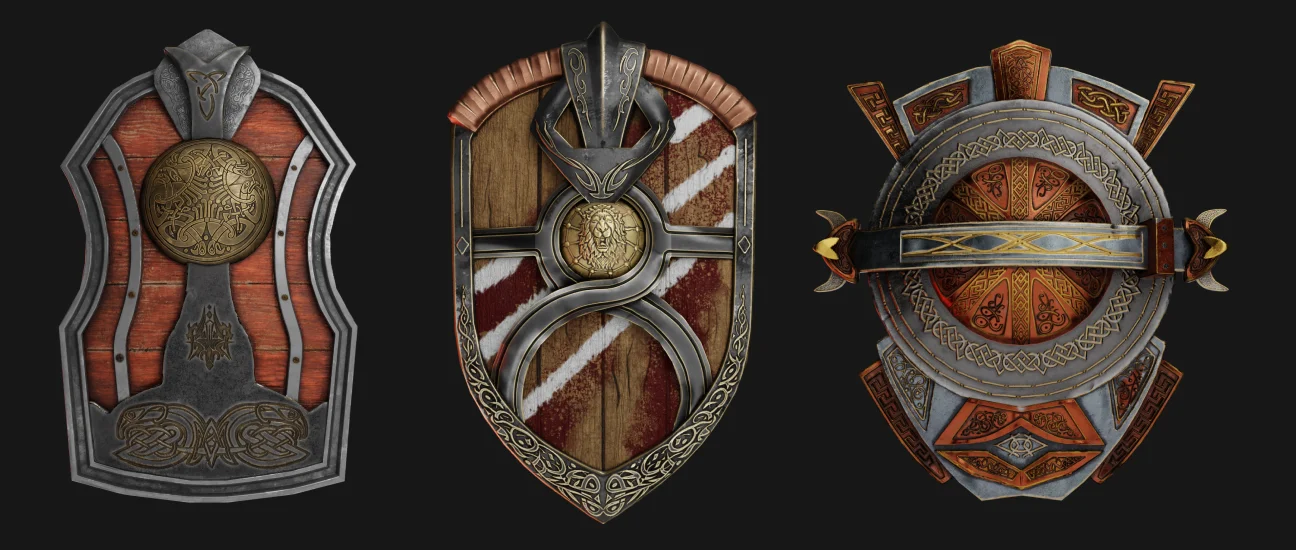
Prop artists are responsible for designing, modeling, texturing, and sometimes animating objects to ensure they seamlessly integrate into the game environment. Props also convey narrative elements, cultural influences, and historical context within the game world, adding depth to the overall storytelling.
Also read: How to Design Iconic Video Game Weapons and Equipment?
Environment Art
Game environment modeling establishes the tone, ambiance, and sense of place within a game world, immersing players in its rich and detailed surroundings. Artists design diverse environments, including forests, cities, deserts, dungeons, and futuristic worlds. They create various assets like terrain, buildings, foliage, skyboxes, atmospheric effects, and texture and lighten these elements to evoke specific moods and atmospheres.

Visual Effects (VFX)
Visual effects help game artists create or manipulate imagery to enhance the visual aspects of a game, often adding dynamic elements like explosions, fire, smoke, weather effects, magical spells, or futuristic technology.

VFX artists employ a variety of techniques and tools to generate these effects, including particle systems, shaders, textures, and animations. It sets the atmosphere, conveys gameplay feedback, and improves the overall player experience.
Read more: Key Factors to Consider When Outsourcing Your Game Art Project
What are the Types of Game Design?
Game design has various types of disciplines and specialties aimed at creating engaging and enjoyable gameplay experiences. Some common types of game design include:
Game Mechanics Design
It includes game conceptualization, implementation, and refinement of rules, systems, and interactions that define the core gameplay experience of a video game. It encompasses a wide array of elements, including player actions, resource management, combat systems, puzzles, level progression, and feedback mechanisms.
Level Design
Game-level designing refers to the development of environments, challenges, and experiences within a video game that players navigate and interact with as they progress through the game. Designers craft layouts and set the pace and flow of each level, ensuring it aligns with the game narratives and design goals.
They also design spaces and incorporate elements like terrain, obstacles, enemies, puzzles, and rewards to create meaningful gameplay experiences.
Narrative Design
Narrative designers work on the storyline, character dialogues, and overall narrative structure. They work to develop engaging plots, rich lore, and memorable characters that resonate with players and enhance their connection to the game world.
UI Design
Game UI designers understand player psychology, information hierarchy, and usability principles to create functionally efficient and visually appealing user interfaces. They craft menus, buttons, icons, and visual elements that guide players through the game’s mechanics, objectives, and settings.
UX Design
Unlike UI design, UX design deals with the player’s journey, considering factors like flow pacing, feedback mechanisms, and emotional resonance. Game UX designers design interaction systems and interfaces that prioritize user engagement, intuitiveness, and immersive experiences.
Sound Design
Sound designers evoke specific emotions, convey important information, and encourage players to enjoy and stick to the game through the background music. They use auditory components, including background music, sound effects, voiceovers, and ambient sounds, all carefully crafted to complement the game’s narrative, gameplay mechanics, video game background design, and visual aesthetics.
Game Art vs Game Design: What Separates Them?
Game art and game design are both integral components of the video game development process, but they involve different aspects and skill sets. Here’s a breakdown of each:
Technique Differences
Game artists experiment with color palettes, art direction, and overall visual coherence. They employ diverse art styles, like realistic, pixel art, cartoony, or minimalist, depending on the intended atmosphere and target audience.
Opposite to it, game designers work closely with artists to ensure that the visual elements support and enhance the gameplay mechanics and narrative. They specify requirements for art assets, provide feedback on graphical prototypes, and ensure that the visual design aligns with the intended player experience.
Team Responsibilities
Game artists collaborate with concept artists, 3D modelers, animators, texture artists, and visual effects artists. They work with game designers and level designers to ensure visual elements support and enhance the gameplay experience. Furthermore, they connect with programmers and technical artists to make sure art assets are optimized for performance and integrate seamlessly into the game engine.
Meanwhile, game designers communicate with a diverse range of team members, including artists, programmers, writers, and producers. They work closely with game artists and connect with level designers to design levels, puzzles, and challenges that align with the game’s design goals. Additionally, they reach out to programmers to draft strategies for implementing gameplay features, mechanics, and systems within the game engine, often using scripting languages or visual scripting tools.
Resources and Skill Set
Game art design requires various resources and digital art tools like Adobe Photoshop, Autodesk Maya, Blender, reference materials such as concept art, real-world images, and hardware, including graphics tablets and powerful computers. You should hire game artists with the capability to work with these tools. They must know how to access libraries of textures, models, and visual effects to streamline their workflow.
Game artists are skilled in using artistic techniques like drawing, painting, modeling, texturing, and animation. They have a strong understanding of composition, color theory, perspective, anatomy, and visual storytelling to create compelling and immersive game worlds.
In contrast, game designers know how to work with game engines, design documents, flowcharts, wireframes, and access playtesting facilities or platforms. They are well-versed in utilizing prototyping tools and libraries of game assets to iterate on gameplay mechanics and other systems.
Hence, you must hire game designers with creative analytics, and technical skills to conceptualize and implement gameplay experiences. They should be proficient in using game development tools, scripting languages like C#, & JavaScript, and game design methodologies like agile and iterative design for translating design ideas into playable experiences.
Tools and Technologies
To create graphical assets, they take the support of software tools like Adobe Photoshop or vector-based tools like Adobe Illustrator for creating art and textures. For 3D assets, artists use software like Autodesk Maya, Blender, or ZBrush for modeling, sculpting, and texturing.
On the other hand, game designers use tools to design game levels, user interfaces, and game scripting. They use level editors or game engines like Unity or Unreal Engine to build levels, place objects, and define interactions.
They also use user interface design tools like Adobe XD or Sketch to create mockups and wireframes for in-game menus and HUD elements. Additionally, designers may use scripting languages like C# or Lua to implement gameplay mechanics and system behaviors within the game engine.
Implementations and Iterations
Game artists are responsible for implementing character models, environmental assets, textures, animations, and special effects into the game engine. They often undergo multiple iterations and implement feedback collected from the art director, game designers, and other team members. They adjust colors, shapes, textures, animations, or effects to achieve the desired visual quality and coherence.
Contrary to this, game designers support programmers in translating design concepts into functional gameplay features within the game engine. It includes scripting events, creating AI behaviors, defining rules and parameters, and integrating player feedback mechanisms. They refine, playtest, collect feedback, make adjustments, establish balance, improve player experience, and tweak gameplay elements to achieve desired outcomes.

Final Verdict
In summary, game art vs. game design is a long debate, and none is less important than the other as their prime features and methodologies shape the game development process. It’s their collaboration and synergy that breathe life into games, offering players unforgettable journeys filled with both visual splendor and interactive excitement. However, the final output may depend on the game development studio you have chosen to create game art and game design.
Why Choose 300Mind to Avail Game Art and Game Design Services?
300Mind is the preeminent choice for availing game art design and game development services. We have industry-leading experts and cutting-edge technical prowess, including character design, environment art, UI/UX design, level design, and systems design. Our experts possess extensive experience working on a wide range of projects across different genres and platforms, from mobile games to AAA titles.
Our game artists are proficient in industry-standard software such as Adobe Photoshop, Autodesk Maya, ZBrush, Substance Painter, and Blender for creating high-quality 2D and 3D assets. They are adept at using tools like Unity, Unreal Engine, and various game development frameworks to prototype, implement, and iterate on gameplay mechanics and systems.
Our artists meticulously craft visually stunning assets that enhance the aesthetic appeal of games, while our designers focus on refining gameplay mechanics to create engaging and immersive player experiences.
FAQ on Game Art and Game Design
Game designers work on all stages of the game development process, from brainstorming initial ideas to prototyping, designing, playtesting, and fine-tuning gameplay mechanics. They create rules, objectives, and challenges that players encounter in the gameplay.
Game artists create visual elements, including concept art, character design, environmental design, 3D modeling, texturing, animation, and visual effects. They translate concepts and ideas into compelling visual assets that enhance the overall gameplay experience.
The growing use of powerful rendering engines, sophisticated graphics hardware, and real-time rendering techniques will support game artists to create increasingly detailed and immersive worlds. On the design side, advancements in AR/VR, Metaverse, Blockchain, AI, and ML will open up new possibilities for game designers.
